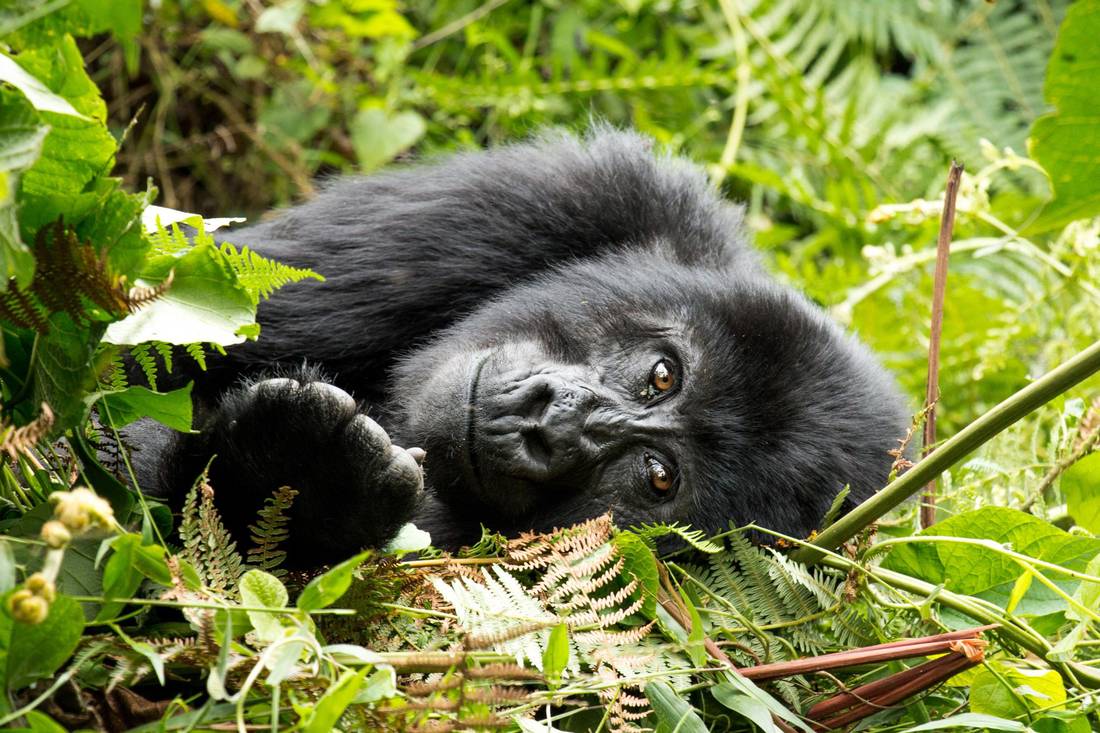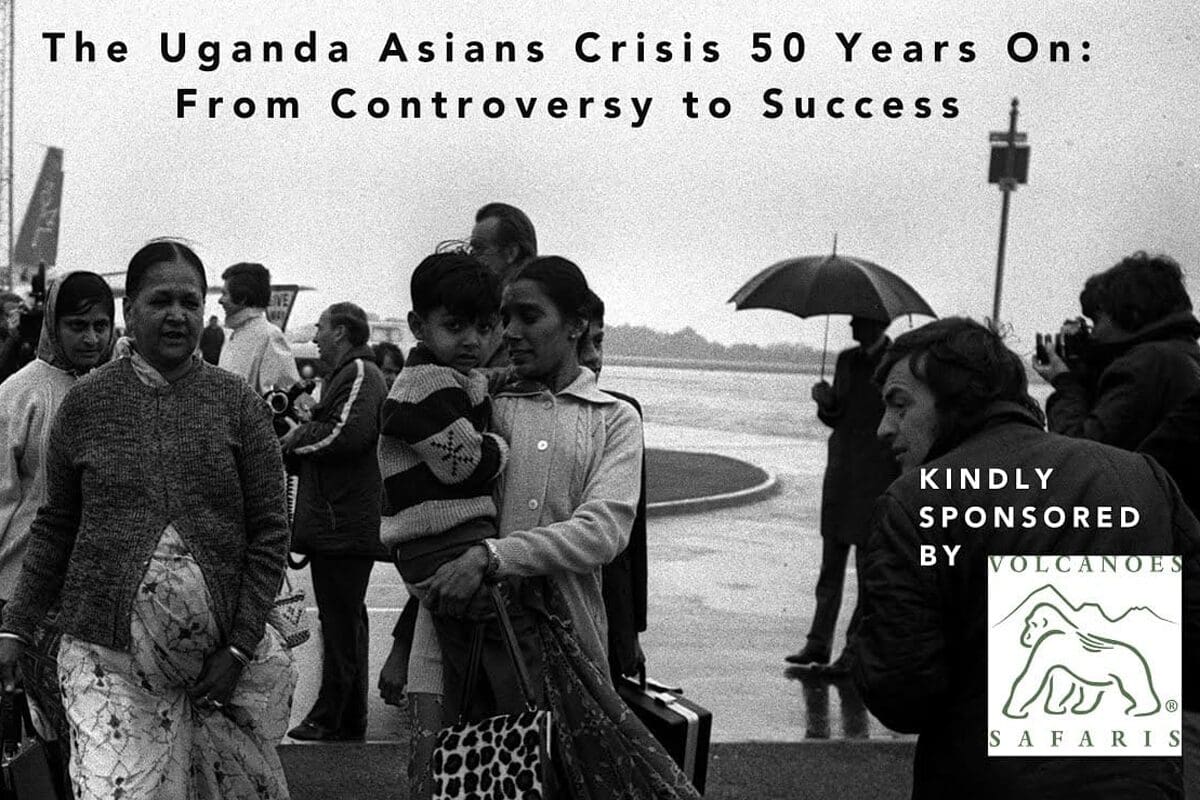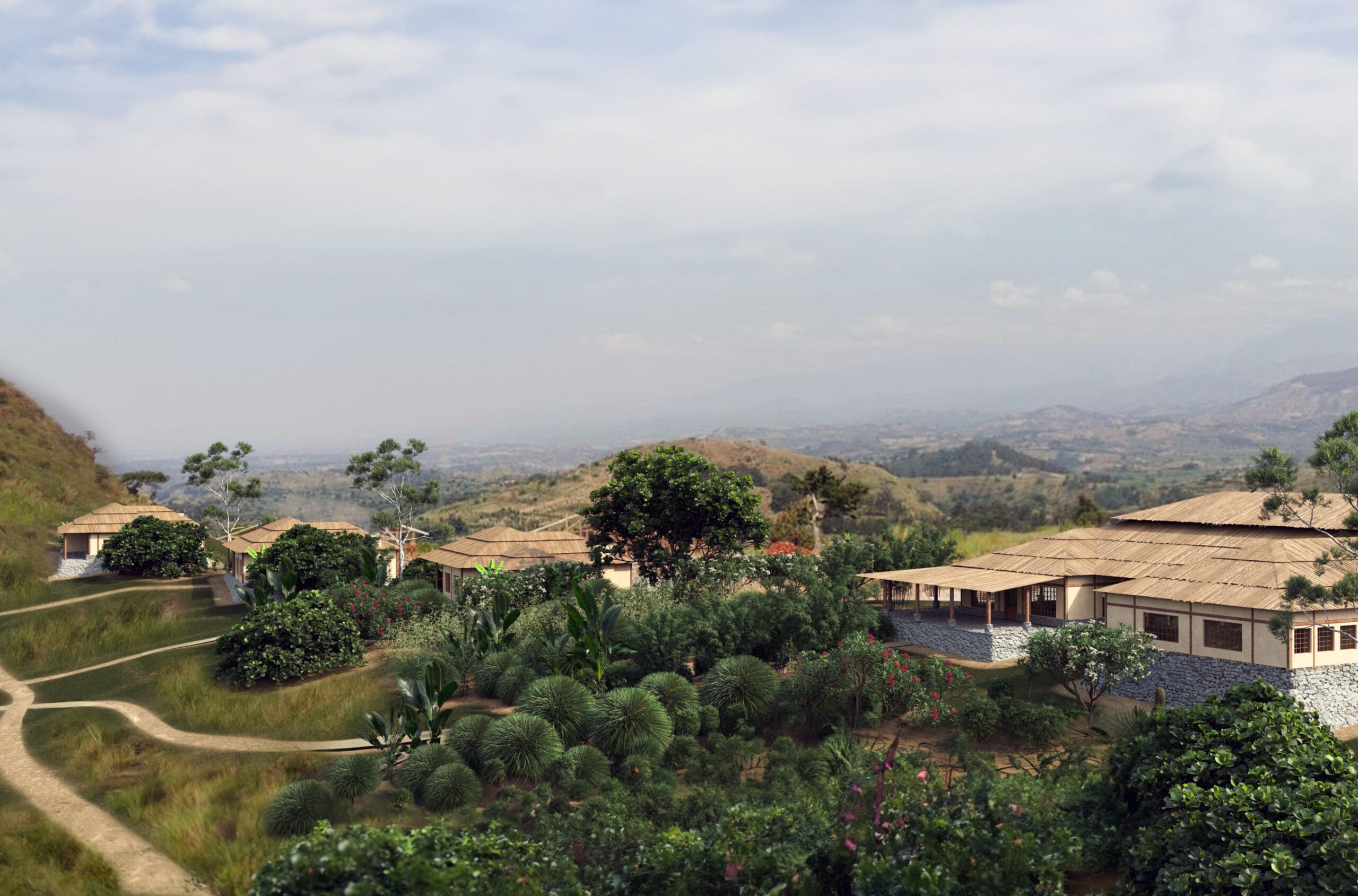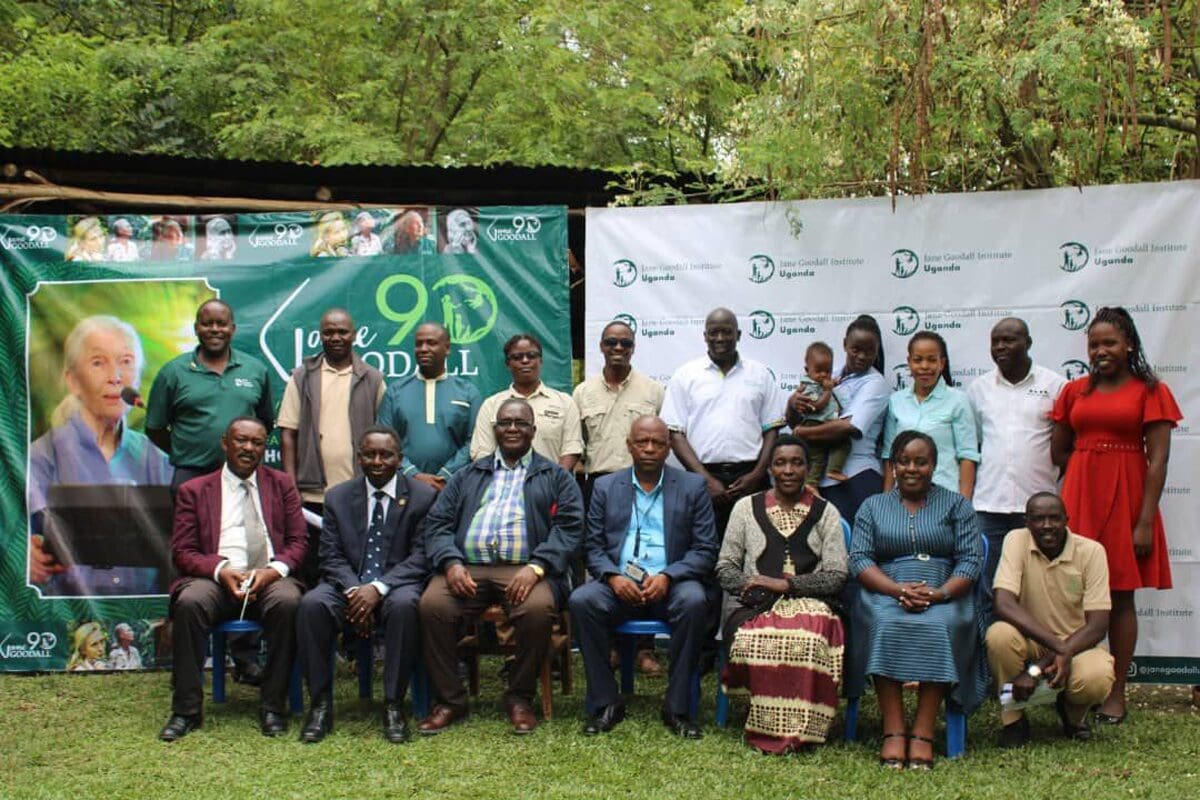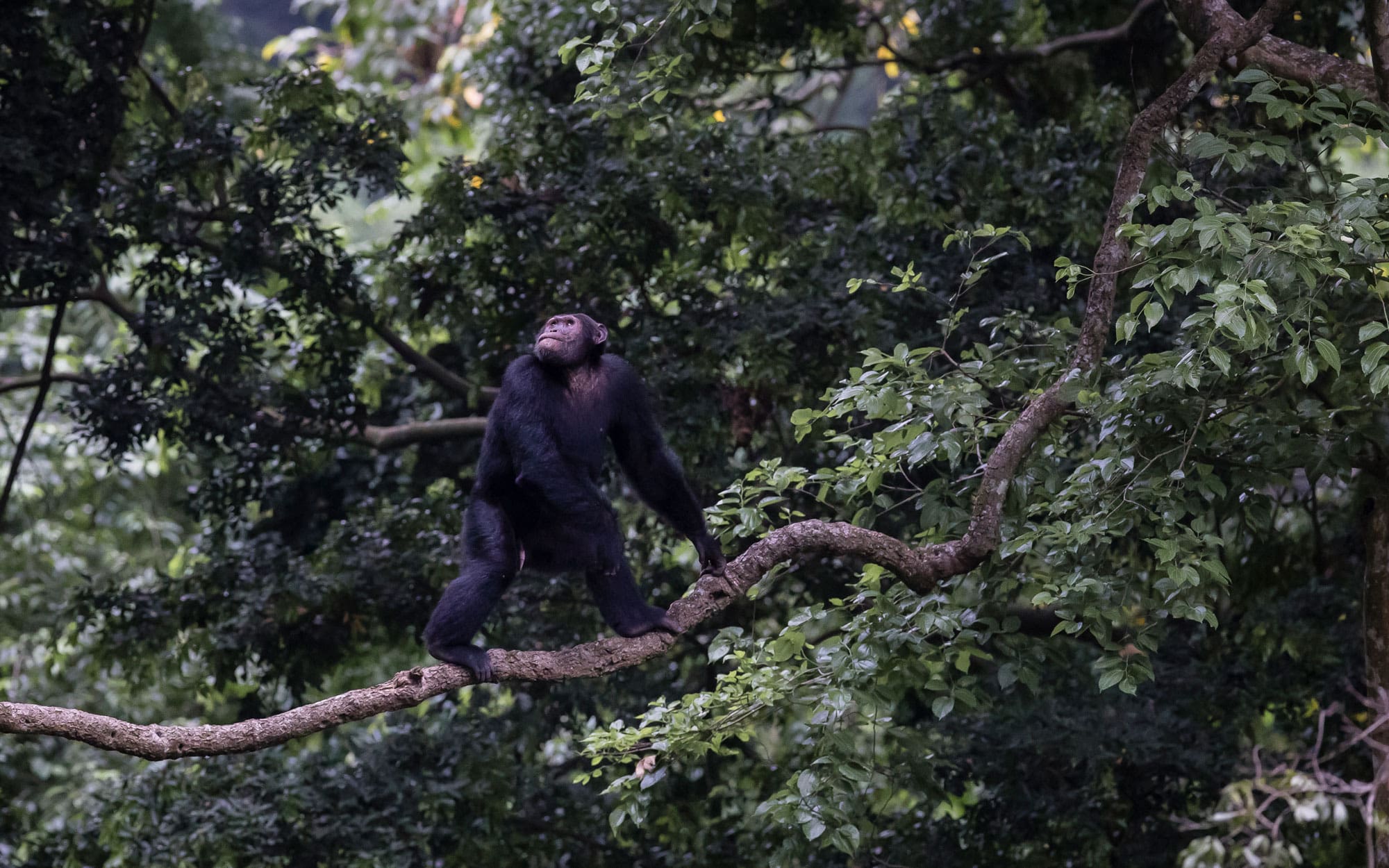Looking out the window of an 11-seat Cessna plane, I fixate on the aerial view of this vibrant green landscape that slopes dramatically, forming a roller coaster of terraced hills and valleys dotted with tiny villages. Just like the Ugandan weather, it changes within minutes – the bright landscape is gone, swallowed up by a dense, dark, unyielding forest.
"That must be the Impenetrable Forest," someone says. A sea of trees blankets the ground, forming an opaque roof over whatever lies below. The mist rushes in and swirls around the trees, which now look like perfect little heads of broccoli boiling in a pot. On one side of the plane, it's a beautiful, sunny day. Down in the jungle, it's dark.
After the plane lands on the small Kihihi Airstrip, it's an hour-and-a-half drive to Bwindi Lodge.
From the window of my thatched-roof banda at the lodge, I have a much different view of the forest. It stretches uphill and disappears into the mist, taking whatever wildlife it protects with it. I study it carefully on a brief walk later in the day, noting that the eucalyptus trees have been stripped of their bark by little hands.
Not human hands, mind you. Almost human, though.
Looking out the window of Bwindi Lodge, the mountains disappear into the mist.
HILLARY RICHARD
This is mountain gorilla country, and gorilla trekking is Uganda's main tourist draw. In the interest of preservation, the process is tightly regulated; only a limited number of permits are issued for each date, so visitors have to apply well in advance. Each trek involves a maximum of eight people, plus an official park ranger as a guide. Trekkers are encouraged to hire a porter for the day for $15 (U.S.) – both as a way to directly employ local villagers (some of whom are reformed poachers) and to help hikers navigate the difficult, dangerous landscape. Time with the gorillas is strictly limited to one hour a day.
Fifty years ago, fearing their total extinction, Dian Fossey established the famous Karisoke Research Center on the Rwandan side of the Virunga Mountains. Still, by the 1980s, the mountain gorilla population had dwindled to roughly 250.
In 1997, Ugandan resident Praveen Moman founded Volcanoes Safaris with the intention of preserving this delicate region so its gorilla populations could recover. In its 20 years, Volcanoes Safaris has become a world-renowned leader in responsible tourism in Uganda and Rwanda, with four popular lodges near all the great ape parks: Virunga (in Rwanda), Mount Gahinga, Bwindi and Kyambura. Habitat destruction through farming and logging is one of the biggest threats to mountain gorillas.
In order to enrich the communities around these parks and encourage people to guard and protect the gorillas' natural habitats, the Volcanoes Safaris Partnership Trust uses tourism, employment and special charitable initiatives to reduce human-wildlife conflicts.
Last night, across the border in Rwanda at Virunga Lodge, a woman showed my safari tour group photos from her gorilla trek that day. The Rwandan trek is rumoured to be flatter and easier. Her words rang out ominously in my mind: "You're going trekking in Uganda?" she sniffed. "Well, good luck."
Nobody could tell us what to expect on our trek through the Bwindi Impenetrable Forest. The route changes constantly because wild animals like to wander. For two gruelling hours, seven of us scramble through mud, over rocks, into thorns, then straight up the slope of a mountain. The jungle is so thick it requires an expertly wielded machete to get through. This, the guide says with a wink, is "the shortcut." The trackers have made it to the right spot, and we are racing to join them.
Later, the sight of one dark, furry back in a tree instantly dissolves all memory of the difficult journey here. Everyone stares intently, waiting for the creature to turn around. Suddenly, the thick vegetation behind me rustles loudly under the weight of something big, which lets out deep, inelegant grunts. A tracker frantically motions for me to move away. As I pass the mess of ferns and branches, a leathery hand pulls back some leaves while a pair of dark eyes watch me.
A gorilla relaxes on a pile of leaves in Bwindi Impenetrable Forest.
HILLARY RICHARD
Once the silence of the jungle is broken, they move fast. A pile of ferns sways as a long, furry arm systematically strips leaves off vines and shoves fistfuls into a mouth. Fingers wrap around branches and faces peer out, while the now-familiar sound of ripping leaves and cracking branches resumes. Soon, the crunching of bark and the gnashing of teeth rises to a comical din. It's lunchtime in the jungle.
A smaller figure sits in a tree slightly downhill, ripping up leaves with slightly more grace. A small arm wraps around the tree trunk, tiny fingers searching blindly for some kind of grip. The rest of a furry little body follows, clumsily hugging the trunk. Without pause, the mother uses one arm to keep eating and the other to snatch up her baby when those inexperienced long toes lose their grip.
There are fewer than 900 mountain gorillas on the planet, and here I am surrounded by eight of them. This is the Bitukura family, a troop of 12 led by a 25-year-old silverback. Most people will never see a mountain gorilla, because they can't survive in captivity like their lowland relatives. They live only in a small radius of high-altitude cloud forests and bamboo groves that make up the national parks of Volcanoes (in Rwanda), Bwindi and Mgahinga (in Uganda) and Virunga (in the Democratic Republic of the Congo).
Mountain gorillas are shy, gentle giants. The ranger and trappers read the gorillas' body language and whisper instructions for ours, to make sure we never appear too large or move too quickly. Within minutes, most of the gorillas are bored with us and go back to what they were doing.
The mother gorilla swings effortlessly down from her tree and sits in open ground, a mere metre from us. The baby follows, stumbling along and trying to mimic everything her mother does. After feasting on vines and shoots, and now confident in the fact they are safe, the mother rolls over and goes to sleep on her side, pulling the anxious baby tightly into her chest like a squirming teddy bear. Once asleep, she involuntarily releases her grip. The baby wriggles away, grasping her mother's fur tightly with her tiny hands as she climbs all over her. In a miscalculated move, the baby slips and tumbles off, then runs straight to her mother's large sleeping face out of shock. Without even opening an eye, she raises a giant palm and strokes her daughter's small head. The baby grabs the folds of her face and gingerly plants a tiny kiss.
Sun breaks through the leaves of Bwindi Impenetrable National Park.
GETTY IMAGES/ISTOCKPHOTO
For one privileged hour, I live in the moment, watching these critically endangered creatures experience all of the same emotions we feel each day: hunger, fatigue, boredom, curiosity, love, happiness, wariness, tolerance, respect, trust.
Later, everyone automatically gravitates to the picturesque windows of Bwindi Lodge's living room, mesmerized by the jungle scenery and its soft light. As a fire dries us off and steaming mugs of Ugandan tea warm us up, we chat excitedly about what we saw and the different experiences we had, as if all of us hadn't been in the exact same place only hours before. The wind picks up, bringing with it the smell of rain through the windows and open door. The living room goes silent as a mixture of fatigue and curiosity sets in. Within minutes, a storm races downhill right toward us, raining down on the treetops of the Impenetrable Forest. This time, it doesn't seem so ominous and unfamiliar. It's soothing and beautiful.
If you go
Virunga Lodge: These 10 refurbished, spacious stone bandas situated between Rwanda's Lake Bulera and Lake Ruhondo overlook the peaks of Volcanoes National Park. A new map room pays tribute to Dian Fossey's conservation work in the surrounding area.
Rates start at $500 (U.S.) a person sharing, all-inclusive. volcanoessafaris.com/virunga-lodge-rwanda
Bwindi Lodge: Eight thatched-roof, luxury bandas overlook the serene and mesmerizing Bwindi Impenetrable Forest in Uganda.
Activities include nature walks, tea demonstrations, village tours, weaving demonstrations and, of course, relaxing in front of the large panoramic windows.
Rates start at $188 a person sharing, all-inclusive. volcanoessafaris.com/bwindi-lodge-uganda
Mount Gahinga Lodge: Scenic Mount Gahinga Lodge is surrounded by volcanoes and is within walking distance of Uganda's Mgahinga Gorilla National Park. Its six large, recently refurbished bandas are totally solar-powered, which can make them slightly more rustic during the wet season.
Rates start at $135 a person sharing, all-inclusive. volcanoessafaris.com/mount-gahinga-lodge-uganda
